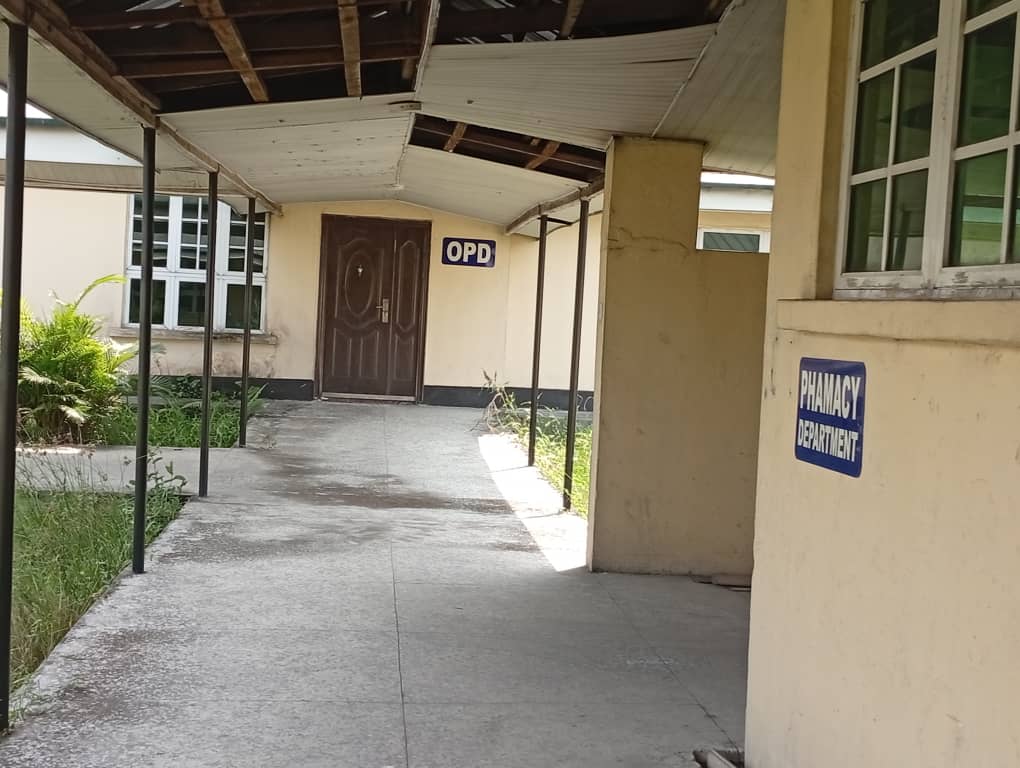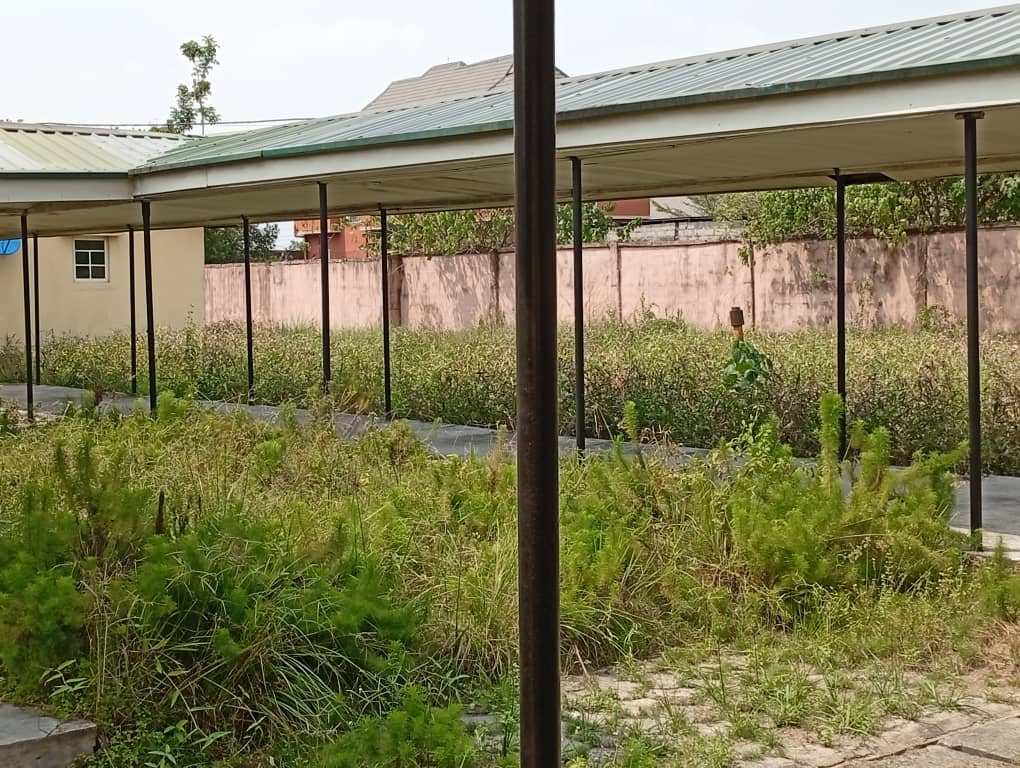By Paul Chimodo
Buguma, a jewel of the Kalabari kingdom, is cradled by the intricate network of the Niger Delta. A community steeped in history, once a vibrant center of commerce, now finds itself battling a growing crisis: the failure of its recently refurbished General Hospital. The reopening, which was intended as a symbol of medical advancement, has instead cast a long shadow of disappointment, leaving the populace grappling with the stark reality that the hospital offers minimal services, and the promise of quality medical care remains agonizingly unfulfilled.
The story of Buguma General Hospital reflects the broader challenges plaguing healthcare throughout the Niger Delta. It is a narrative woven with threads of political strategy, community expectations, and the enduring human need for healing and care. Echoes of criticism, aired even before the hospital’s doors reopened, now resonate with a painful truth. The refurbishment, spearheaded by a controversial lawmaker, Enemi George, has, for many, proved a wasted endeavor.
The local populace, grappling with mounting frustrations, has voiced its dismay. The story of the hospital’s failure is not unique, but in Buguma, it resonates deeply, highlighting a systemic issue: the disconnect between promises made and promises kept. The people, left with a ghost of a hospital, feel betrayed by a system that appears to prioritize appearances over the critical matter of healthcare.

The most poignant voices of the community belong to the elderly, those who have witnessed Buguma’s evolution and who now bear the brunt of the hospital’s failures. Amongst them are many octogenarians, their eyes reflecting a lifetime of resilience. Speaking through interpreters, their frail frames a testament to the passage of time, they recount the immense difficulties they face in accessing even the most basic healthcare. “We were so happy when we heard the hospital was reopening,” they begin, their voices laced with a mixture of hope and disillusionment. “We thought finally, we would have a place to go when we are sick, where the doctors can help us, and where we can feel safe. But now, it’s just…nothing.”
The inability to access adequate medical care has become a daily struggle for the elderly. Simple ailments, which could be addressed with routine check-ups and readily available medications, are now potential threats. The nearest functional medical facilities are located far away, often requiring expensive and arduous journeys by boat, a significant barrier for those with limited mobility and financial resources.
Their words painted a vivid picture of the healthcare deficit that plagues Buguma. The lack of accessible healthcare leaves individuals vulnerable to preventable illnesses and complications, undermining the quality of life for a generation that has contributed so much to the community. This reality highlights the profound responsibility that the state government shoulders, a burden made heavier by the failure of this key healthcare facility. The absence of healthcare undermines their dignity and their right to a healthy life.
The sentiments of the elderly are mirrored by scores of other Buguma residents. Disappointment permeates their accounts, as they relay tales of dashed hopes and unmet expectations. “It’s like a ghost town,” one resident lamented. “You go there, and you see the beautiful buildings, but there’s no life, no doctors, no nurses, nothing to make it a hospital. It’s just an empty shell.” The initial excitement and anticipation have given way to a deep sense of loss.
The irony of the situation is stark. The hospital, touted as a symbol of progress and a lifeline for the community, stands largely empty, its potential unrealized. The expensive refurbishment, aimed at providing vital services, has instead become a source of frustration and anger. Residents expressed their deep dismay, describing the feeling of being betrayed by a system that seemed to care more about the facade than the essence of care.
The most jarring evidence of the hospital’s state of disrepair is the condition of its surroundings. The grass, allowed to grow unchecked, has consumed portions of the once-manicured grounds, creating an image of neglect and decay. The only section showing any signs of activity, ironically, is the mortuary. This disturbing truth reinforces the perception that the hospital is a place of death, rather than life, a place where hope goes to die. The overgrown vegetation serves as a visual metaphor for the neglect and decay that permeates the entire facility.

The investigation into the hospital’s predicament uncovered a series of complex issues. Lack of qualified medical personnel is the most critical. While the physical structure has been improved, the essential human component – doctors, nurses, and support staff – is conspicuously absent. Without a dedicated and skilled medical team, the hospital remains a shell, incapable of providing even the most basic services. It is a physical structure without a soul, a building without a purpose.
Furthermore, the absence of essential medical equipment is a major impediment. The hospital, though refurbished, appears to lack many of the necessary tools and technology to provide adequate diagnosis and treatment. This deficiency forces patients to travel to distant facilities, adding to their financial burden and delaying the access to critical care. The lack of modern equipment underscores the superficiality of the refurbishment and the neglect of genuine medical requirements.
The lack of essential drugs and supplies further compounds the problem. Even if medical staff were present, they would be unable to provide adequate care without access to the necessary medicines. This shortage leaves patients without treatment for common illnesses, exacerbating their suffering and creating a vicious cycle of poor health outcomes. Simple infections, treatable with readily available antibiotics, can become life-threatening without the necessary resources.
The hospital, designed to serve the community, instead stands as a symbol of broken promises and missed opportunities. It represents a profound failure of responsibility, a disregard for the basic human rights of the people it was intended to serve. The empty corridors and unused equipment stand as a testament to misplaced priorities.
The Buguma community is united in its urgent plea for intervention. They have exhausted all available avenues and are now turning to the Rivers State Government, the institution with the power to right this wrong. Their message is clear: they need qualified medical professionals to manage and operate the hospital. They implore the government to prioritize the health and well-being of its citizens and to provide the necessary resources to bring the hospital back to life.
The residents understand that the resolution to the crisis extends beyond simply hiring medical staff. A comprehensive plan is required, one that addresses the underlying issues, including the procurement of essential medical equipment, the provision of drugs and supplies, and the establishment of effective management and maintenance systems. The community is willing to collaborate with the government, sharing their expertise and insights to ensure the hospital becomes a true asset, capable of delivering quality healthcare to all. They want to be partners in the process, not passive recipients of failure.


